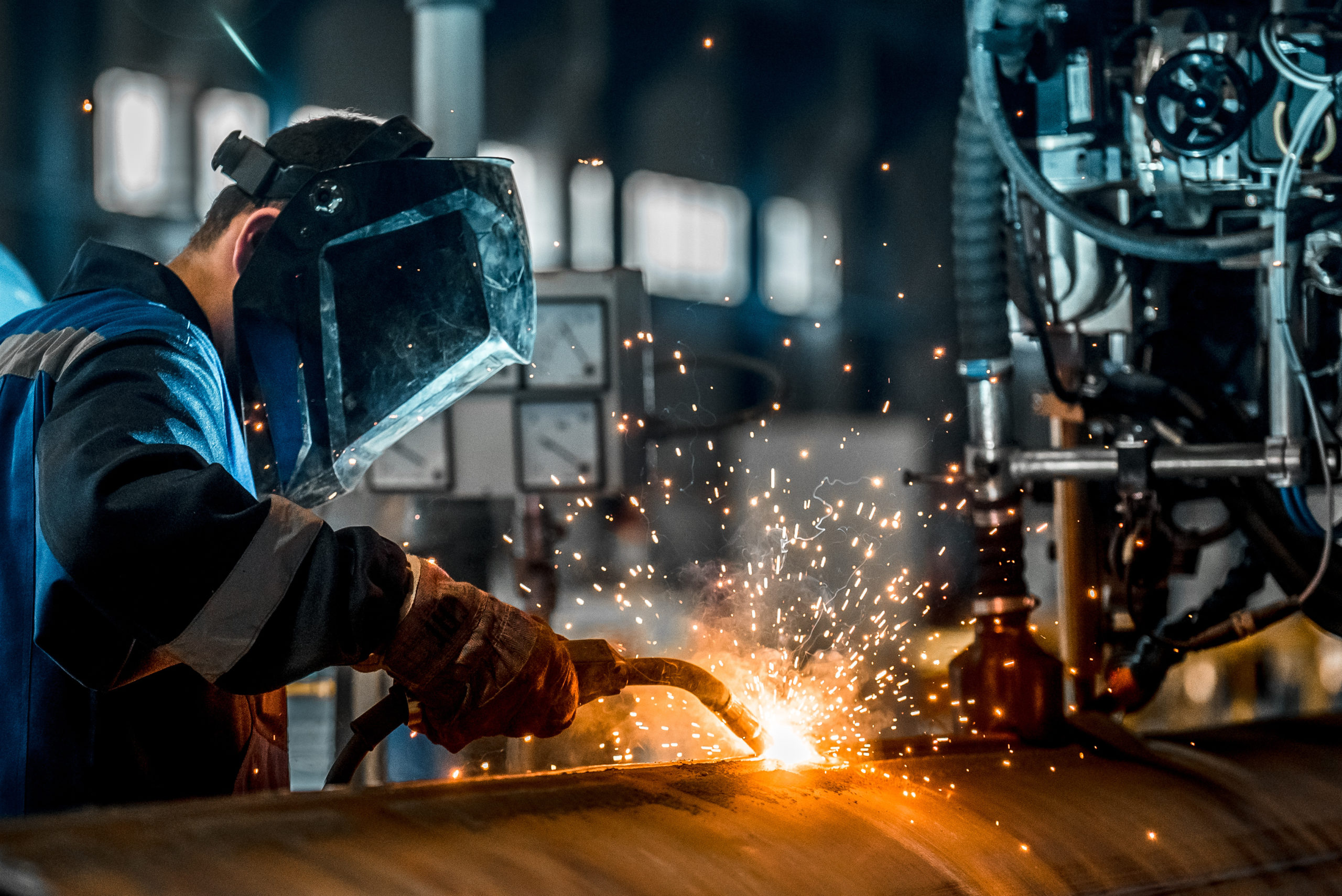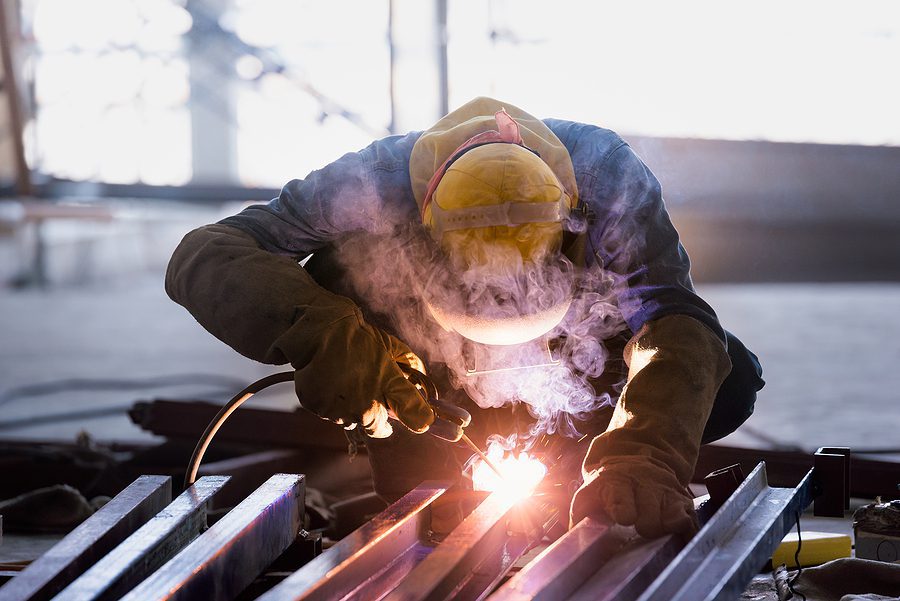Common Welding Repair Work Issues and Just How to Address Them Properly
Welding fixings frequently run into a variety of issues that can endanger the stability of the final item. Typical issues consist of poor infiltration, porosity, and misalignment, among others. Each problem offers distinct obstacles that need specific strategies for resolution. Comprehending these problems is crucial for welders intending to enhance their results and skills. This discussion will certainly discover these typical welding repair work concerns and efficient methods to resolve them.
Poor Infiltration
Poor penetration takes place when the weld metal falls short to completely fuse with the base material, causing weak joints and potential structural failures. This concern commonly originates from not enough warmth input, wrong electrode angle, or inappropriate welding speed. Welders may run into insufficient penetration as a result of a mistake of the required criteria for a particular product thickness or type. Additionally, contamination on the base material's surface can prevent effective bonding, exacerbating the problem. To attend to poor infiltration, welders should ensure appropriate settings on their devices and keep a clean work surface area. Routine evaluation of welds is advised to identify any kind of deficiencies early, allowing for prompt improvements and the prevention of endangered structural honesty in bonded settings up.
Porosity
Porosity is a typical problem in bonded joints that shows up as small gas bubbles caught within the weld steel. This issue can compromise the integrity of the weld, bring about decreased strength and prospective failure under tension. Belgrade Fabrication. Porosity normally develops from contamination, moisture, or improper welding methods, which allow gases to get away into the molten weld swimming pool. To attend to porosity, welders must ensure appropriate surface area prep work, maintain a tidy working atmosphere, and use appropriate welding specifications. Furthermore, choosing the ideal filler material and shielding gas can minimize gas entrapment. Regular assessment and screening of welds can aid recognize porosity early, ensuring prompt rehabilitative actions are taken, thereby protecting the quality and dependability of the welded structure
Imbalance
Imbalance in welding can arise from numerous elements, consisting of inappropriate setup and thermal growth. Recognizing the origin is vital for efficient resolution. Numerous improvement strategies are available to straighten parts and guarantee structural stability.
Reasons of Misalignment
Welding misalignment typically originates from a range of underlying concerns that can compromise structural integrity. One key reason is inappropriate fit-up of components before welding, which can cause gaps and uneven surfaces. Variants in thermal development during the welding process can also lead to distortion, specifically if the products being signed up with have different coefficients of expansion. Additionally, insufficient clamping and fixturing may stop working to hold components firmly in position, leading to motion throughout welding. Badly conserved tools, consisting of welding equipments and tools, may present inconsistencies in the weld bead, further adding to misalignment. Driver error, stemming from insufficient training or experience, can also play a considerable role in creating misaligned welds.

Improvement Methods Offered
Dealing with imbalance successfully requires a mix of corrective techniques tailored to the certain concerns at hand. One typical technique is making use of fixtures or jigs to hold components in the proper setting during welding, making sure consistent alignment. Furthermore, pre-heating the materials can help in reducing distortion and improve fit-up. For significant imbalance, mechanical realignment methods, such as using hydraulic jacks or clamps, can be utilized to deal with the setting prior to welding. Post-weld warm therapy may additionally be needed to soothe anxieties brought on by misalignment. Careful assessment and change throughout the configuration stage can protect against misalignment problems from becoming significant troubles, promoting a smoother welding procedure and boosting total architectural honesty.
Distortion
Distortion is a common difficulty in welding that can emerge from numerous aspects, including irregular heating & cooling. Understanding the root causes of distortion is crucial for implementing efficient prevention strategies. Addressing this issue not just enhances structural honesty yet additionally improves the total top quality of the weld.
Causes of Distortion
When based on the intense heat of welding, products usually undergo modifications that can bring about distortion. This sensation mainly occurs from thermal development and contraction during the welding procedure. As the weld location warms up, the product broadens; upon air conditioning, it acquires, which can develop inner stresses. In enhancement, irregular heating throughout a work surface can exacerbate these tensions, resulting in warping or bending. The sort of product additionally plays a substantial role; steels with varying thermal conductivity and coefficients of growth may respond in a different way, resulting in unforeseeable distortions. Moreover, poor joint style and insufficient fixturing can add to imbalance throughout welding, increasing the probability of distortion. Recognizing these causes is important for efficient welding repair work and prevention methods.
Prevention Techniques
Effective avoidance techniques for distortion throughout welding concentrate on controlling warm input and making certain appropriate joint design. Maintaining a regular warmth input aids to reduce thermal check here expansion and contraction, which can bring about distortion. Using strategies such as pre-heating the work surface can likewise reduce the temperature gradient, advertising consistent heating. In addition, selecting appropriate joint styles, such as T-joints or lap joints, can boost security and reduce stress concentrations. Executing proper fixturing to safeguard the workpieces in position even more aids in keeping positioning throughout the welding process. Staggered welding sequences can disperse heat extra equally, avoiding localized distortion. By applying these approaches, welders can significantly lower the probability of distortion and boost the overall quality of their welds.
Breaking
Breaking is an usual issue experienced in welding fixings, often arising from numerous variables such as inappropriate cooling prices, product selection, or inadequate joint preparation. The occurrence of fractures can significantly compromise the integrity of the weld, leading to prospective failures throughout operation. To resolve this problem, welders should first evaluate the origin creates, guaranteeing that products work and appropriately selected for the details application. Additionally, managing the air conditioning rate during the welding procedure is necessary; rapid air conditioning can induce stress and cause breaking. Correct joint design and preparation likewise add to minimizing the risk. Implementing these strategies can boost weld quality and sturdiness, ultimately decreasing the likelihood of breaking in completed weldments.

Incomplete Fusion
A considerable concern in welding fixings is insufficient combination, which takes place when the weld metal does not properly bond with the base material or previous weld passes - Montana Mobile Welding and Repair Belgrade Fabrication. This flaw can lead to weak points in the joint, potentially endangering the stability of the bonded structure. Aspects contributing to incomplete blend include not enough heat input, inappropriate welding strategy, and contamination of the surface areas being joined. To address this issue efficiently, welders need to ensure correct pre-weld cleaning and surface area preparation, along with readjust their welding parameters to accomplish ample penetration and combination. Routine assessment during the welding procedure can additionally help determine insufficient welding hoods for sale fusion early, permitting timely rehabilitative measures to enhance the general high quality of the weld
Overheating
While welding fixings can enhance architectural honesty, overheating provides a substantial obstacle that can bring about product deterioration. Extreme warm throughout welding can change the mechanical residential properties of metals, leading to lowered strength, enhanced brittleness, and warping. This sensation is especially essential in high-stress applications where structural reliability is critical. Identifying getting too hot can include visual examinations for staining or distortion, along with monitoring temperature during the welding process. To alleviate the risks connected with getting too hot, welders ought to employ ideal techniques, such as regulating warm input, adjusting travel speed, and making use of appropriate filler materials. Additionally, carrying out pre- and post-weld warmth therapies can aid restore product residential properties and improve the general quality of the repair, guaranteeing long-term efficiency and safety and security.
Frequently Asked Questions
What Are the Usual Indicators of a Welding Defect?

How Can I Test My Welds for Quality?
To test welds for top quality, one can use visual assessments, ultrasonic screening, and radiographic techniques. Each method assures architectural stability, recognizes defects, and confirms adherence to defined criteria, eventually improving the dependability of the bonded joints.
What Security Safety Measures Should I Take While Welding?
When welding, one must focus on safety and security by putting on suitable personal safety tools, making certain proper air flow, safeguarding flammable products away, keeping a clean workspace, and knowing surroundings to stop injuries and mishaps.
Can I Fix a Weld Without Redoing the Entire Joint?
Repairing a weld without redesigning the entire joint is possible, depending on the damages (Belgrade Welding). Techniques such as grinding, including filler product, or utilizing a welding procedure can properly deal with details problems while protecting the bordering structure
What Devices Are Crucial for Efficient Welding Repairs?
Vital tools for reliable welding fixings include a welding maker, cable brush, grinder, protective equipment, clamps, and filler products. Each device plays a vital function in making sure top quality and safety and security during the repair process. Porosity generally occurs from contamination, dampness, or improper welding techniques, which enable electric arc welding gases to run away right into the liquified weld swimming pool. Poorly conserved tools, including welding machines and tools, may present disparities in the weld grain, more adding to misalignment. When subjected to the intense warmth of welding, products typically undergo adjustments that can lead to distortion. Breaking is a typical issue encountered in welding fixings, often resulting from various aspects such as incorrect air conditioning rates, product selection, or insufficient joint prep work. A significant concern in welding repair work is insufficient blend, which occurs when the weld steel does not adequately bond with the base material or previous weld passes.
Comments on “Red flags in welding repair and what Belgrade can do about them”